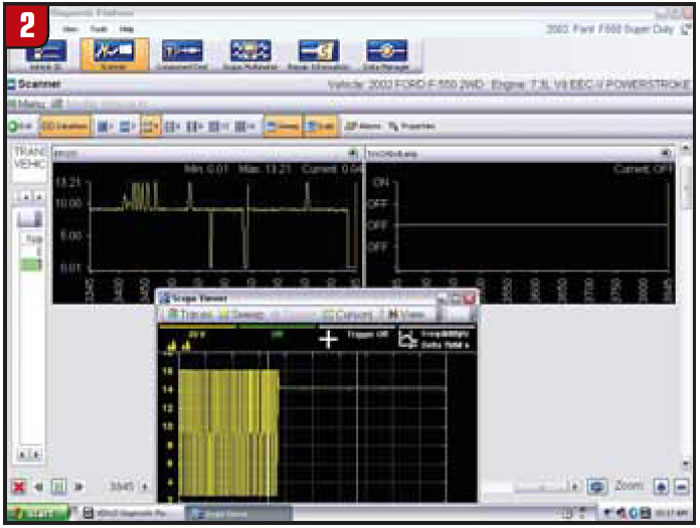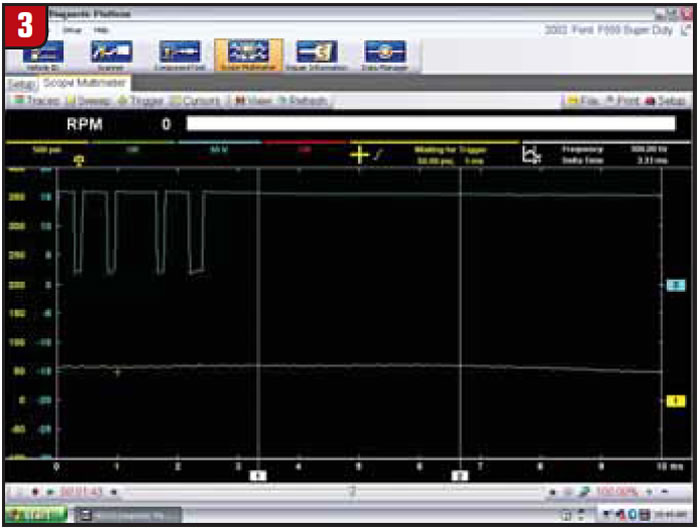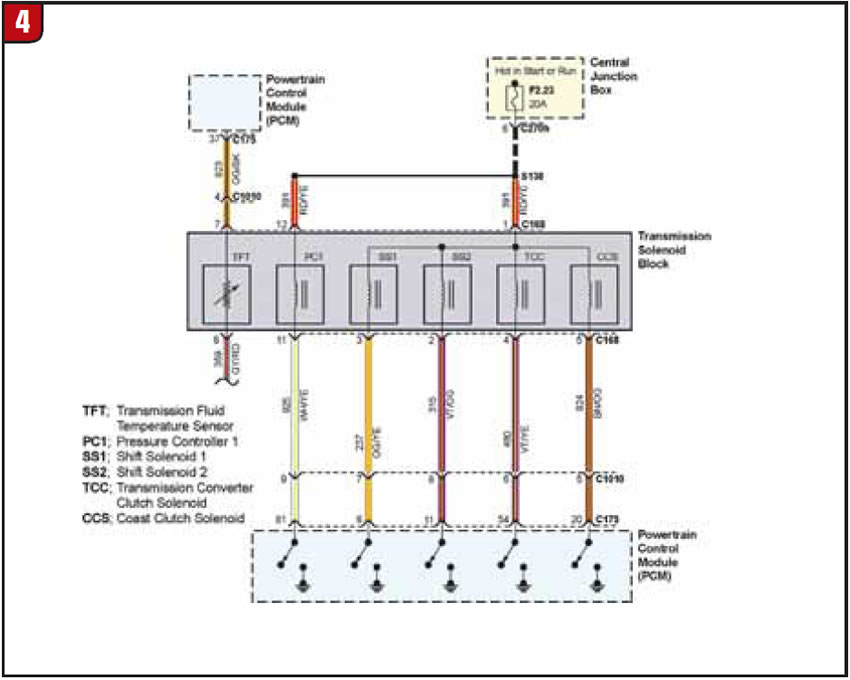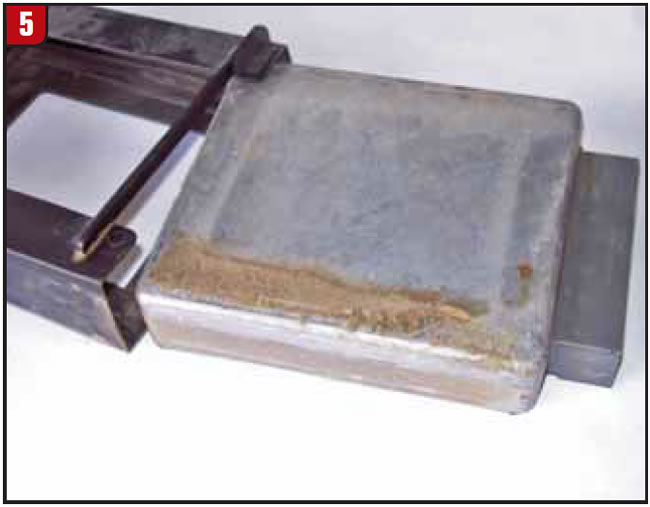
Shift Pointers
- Subject: Lack of power caused by PCM malfunction
- Unit: 4R100
- Vehicle Application: 2002 Ford F-550 diesel truck
- Essential Reading: Rebuilder, Diagnostician
- Authors: Jesse Zacarias and Roy Delfran
Sometimes the programming of a vehicle’s computer can cause a symptom that can appear as a problem, leading a mechanic to try to repair a normal operation.
A local shop brought us a 2002 Ford F-550 with a 7.3-liter diesel engine and a 4R100 transmission.
They mentioned that the customer complained that while he was driving the “overdrive off” light would flash and the vehicle would be gutless.
They checked the vehicle for codes and found two: P1747, pressure-control-solenoid short circuit; and P0221, pedal-position-sensor B performance.
They replaced both the transmission solenoid pack and the accelerator-pedal-position sensor. When the problem persisted, they sent it to us.
When we scanned it for codes the only one present was P1747. We road-tested the vehicle and noticed that as soon as the overdrive off light started to flash the engine performance was gutless.
We installed the VERUS™ and monitored the PCM parameters via the scan tool while at the same time using the scope to monitor the modulation of the pressure-control solenoid by back-probing the PCM at pin 81 (Figure 1).
We noticed that the EPC voltage would, at times, drop to 0 and that the PCM would stop modulating the EPC solenoid. At times this would happen so fast that the overdrive light did not flash (Figure 2).

By concentrating on the lab scope and installing a pressure transducer on channel 1, we where able to see EPC modulation on channel 3 and line pressure in channel 1 at the same time (Figure 3).

We noticed that when the PCM stopped modulating the EPC solenoid, the voltage at the PCM at pin 81 would be about battery voltage and the main line pressure would eventually increase to 150 psi.
With this information we were able to conclude that circuit 925 between PCM pin 81 and pin 11 of the solenoid block was not shorted (Figure 4). The only conclusion was that the PCM had a bad driver.

When we removed the PCM to replace it (Figure 5), we noticed that it had seen some rough usage because of the nature of the owner’s business (on the dirt most of the time). With a new PCM the problem was solved.

Our research discovered that Ford has programmed the PCM so that when P1747 is present, the PCM reduces engine torque to prevent damage to the transmission. It accomplishes this by providing partial fuel shut-off, and this was what caused the customer’s complaint of a lack of power.
When this particular Ford F-550 (Figure 6) was fully loaded, the vehicle would not be able to make it up the smallest hill in failsafe mode.

At times it’s not the failure that gets the attention of the customer, but the symptom. In this case the lack of power was the complaint, not the cause. It is up to us as technicians to find the root cause of the problem and base the repair on the cause rather than the effect.

Jesse Zacarias is the owner of Elec-Tran Diagnostics in Gilroy, Calif. Roy Delfran is with Snap-on Diagnostics’ Ask A Tech Community Web Forums (http://askatech.snapon.com).













